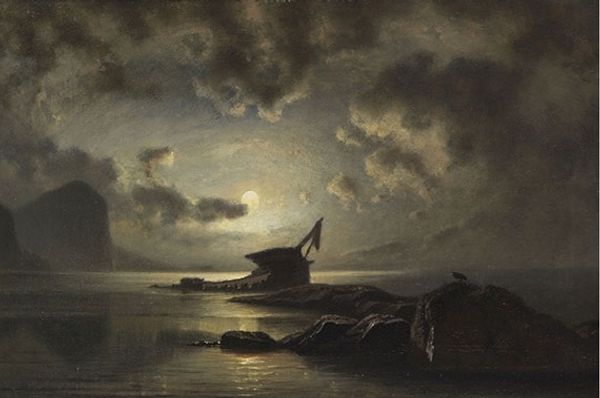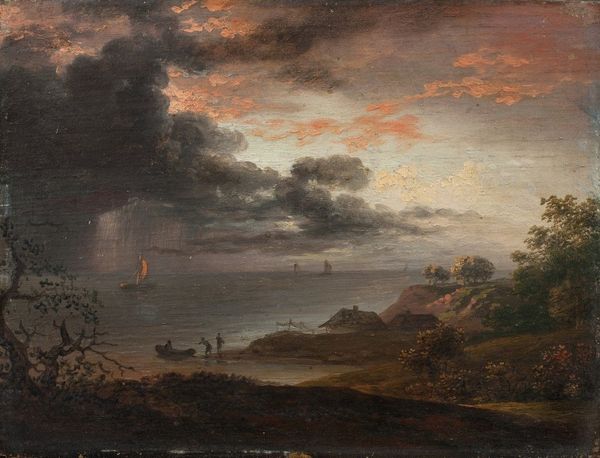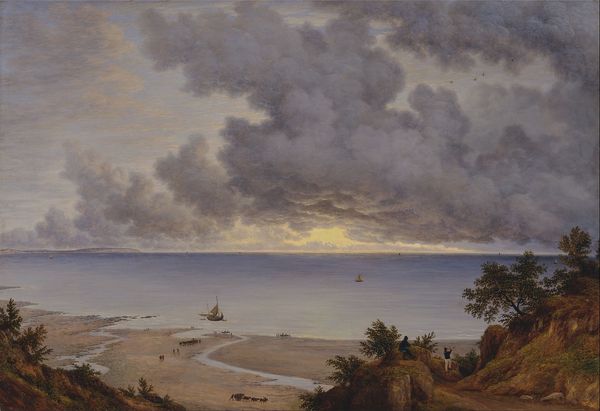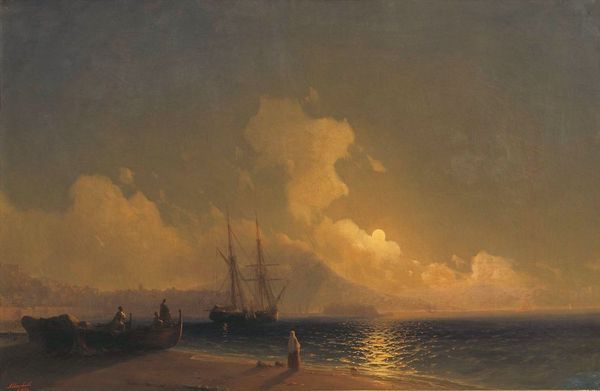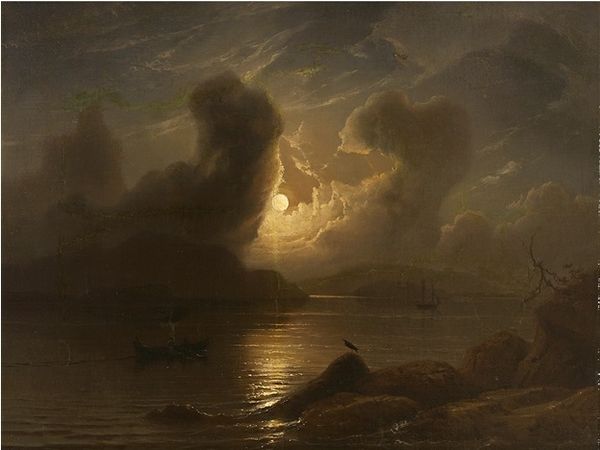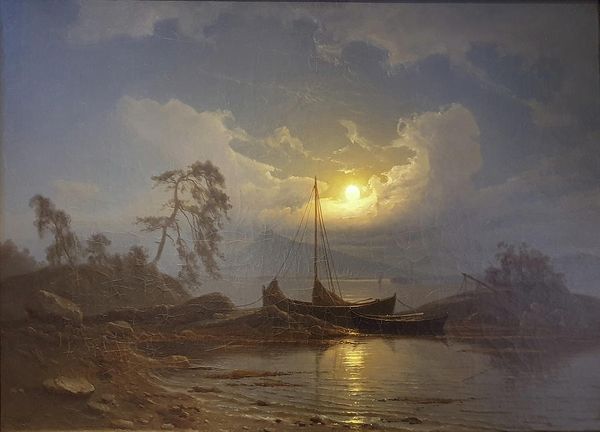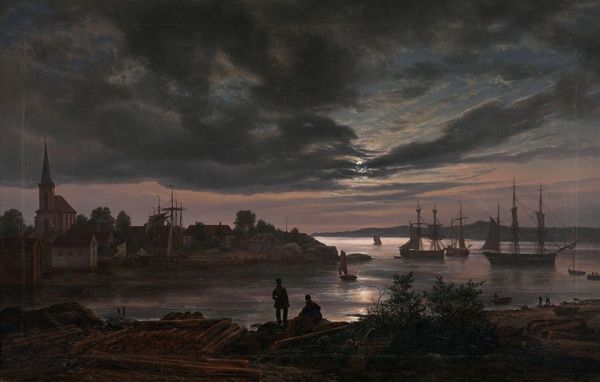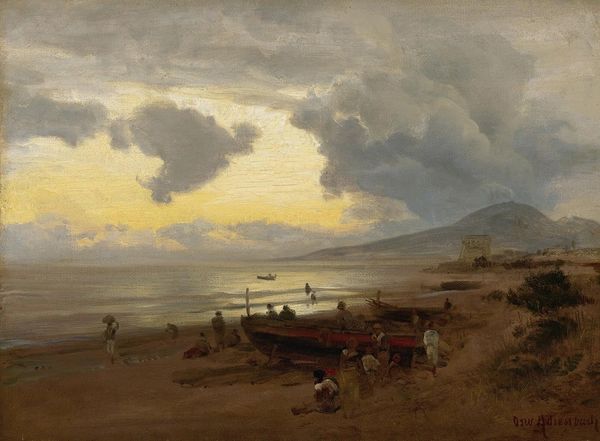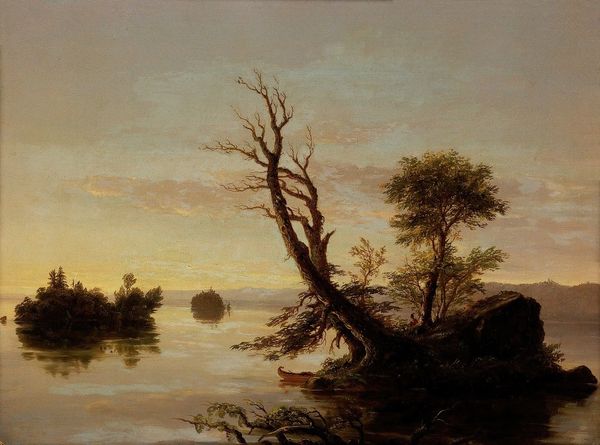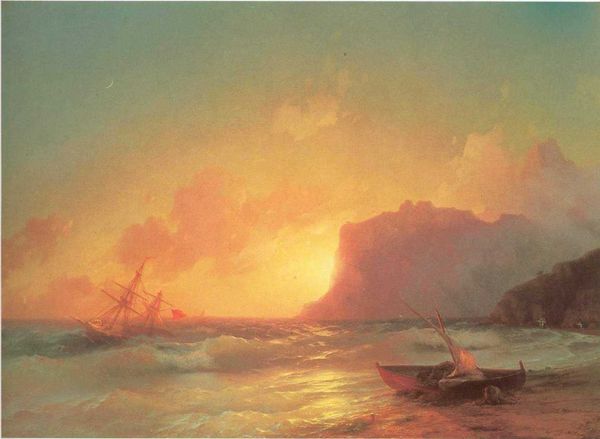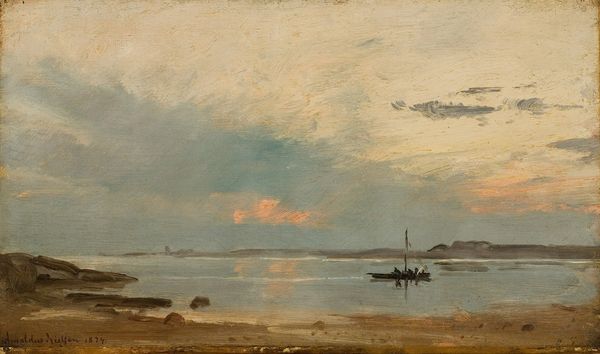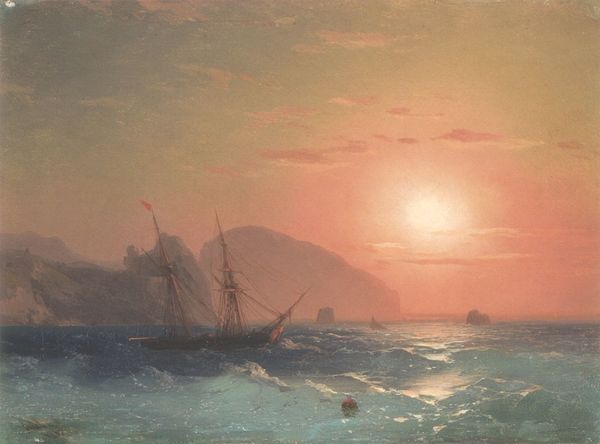
Copyright: Public domain
Editor: This watercolor painting, "A Passagem de Humaitá," was created in 1866 by Victor Meirelles. The muted tones create a very somber and dramatic mood, especially the cloudy sky and the way the light reflects on the water. What do you see when you look at this piece? Curator: Well, first, let’s consider the title. The “passage” likely refers to a military operation. Meirelles isn't just capturing a landscape; he’s embedding a specific historical and political context tied to Brazilian military campaigns. Watercolor allowed a certain speed and portability, perhaps suggesting the artist was in the field. Look at the scale – was this meant as a study for a larger history painting? We need to think about production. Who was the intended audience, and how might they have consumed this image, either literally as a commodity or ideologically? Editor: So, you're thinking about how the materials and the method of making it connect to a broader social purpose? The materials themselves tell part of the story. Curator: Exactly. It’s a question of labor too. Meirelles, an academically trained artist, utilizes his skill – his labor – to create an image with propagandistic potential. The painting romanticizes a potentially brutal historical moment. Were materials scarce or readily available? What narratives were implicitly bolstered by supporting such endeavors and how does that affect perceptions of nationalism, colonialism and their legacies? Editor: I never considered how deeply the production process could inform the narrative of a landscape piece. Curator: It's about grounding art in the real world, tracing the connections between artistic labor, materials, and societal structures. By considering the social and economic fabric surrounding its creation, we unveil some hidden agendas. What seems like a simple romantic landscape reveals a complex tapestry. Editor: I'll definitely look at artworks differently now, paying closer attention to the "how" and "why" it was made and the relationship between production, labor and narrative intent. Thank you.
Comments
No comments
Be the first to comment and join the conversation on the ultimate creative platform.
